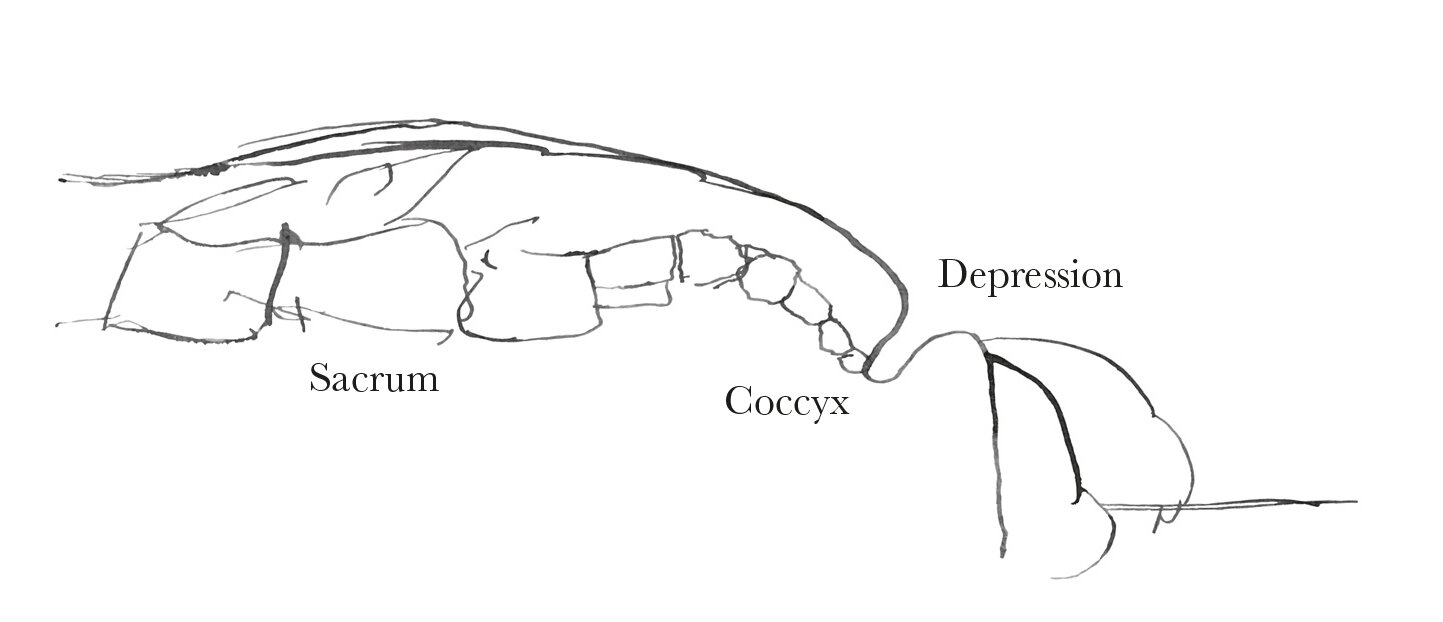From Lawson Tait 31 December [1877]1
Birmingham
Decr. 31
My Dear Sir,
I believe I have made a discovery which will greatly interest you It is no less than the method by which tails are lost and I have found evidence of the process in man which I think will prove as weighty as “Darwin’s ears” is in another direction.2 It is too long a matter for me to go into now but let me merely say that the process is the occurrence of spina bifida and the remnant in man of the process consists of depression of the skin over the point of the coccyx & its union (by fascial adhesion) to the post. surface of the tip bone. I have been engaged all morning in making casts of the depressions in a family of children who have it marked in all & very marked in one. The mother has it. The very marked one I try to give you an idea of in the diagram below. The depression is tubular & quite half an inch deep3
Yours truly | Lawson Tait

child aged 6
I think it quite on a par with the pharyngeal fistula which indicates the lost bronchial opening & the labial furrow which shows the lost hare-lip.4
LT
I’ll send you a cast5
Footnotes
Bibliography
Descent 2d ed.: The descent of man, and selection in relation to sex. By Charles Darwin. 2d edition. London: John Murray. 1874.
Descent: The descent of man, and selection in relation to sex. By Charles Darwin. 2 vols. London: John Murray. 1871.
Tait, Lawson. 1878. Note on the occurrence of a sacral dimple and its possible significance. [Read 20 August 1878.] Report of the 48th meeting of the British Association for the Advancement of Science (1878), Transactions of the sections, pp. 606–7.
Summary
Speculation on the process by which tails have been lost; believes he has evidence from man that it is related to spina bifida.
Letter details
- Letter no.
- DCP-LETT-11297
- From
- Robert Lawson (Lawson) Tait
- To
- Charles Robert Darwin
- Sent from
- Birmingham
- Source of text
- DAR 178: 40
- Physical description
- ALS 4pp
Please cite as
Darwin Correspondence Project, “Letter no. 11297,” accessed on


